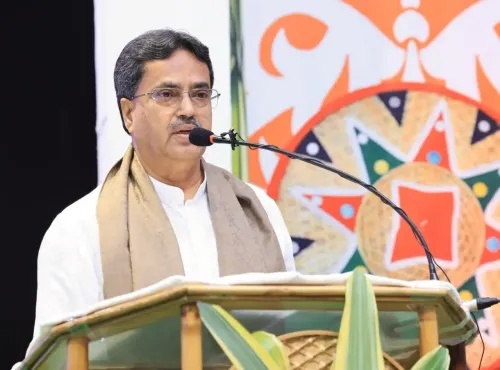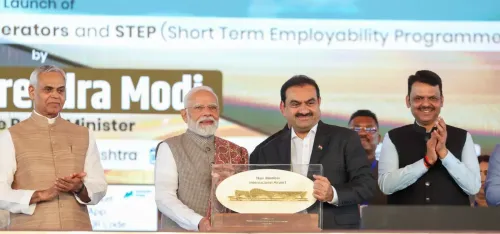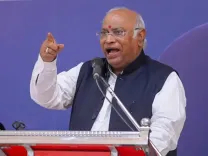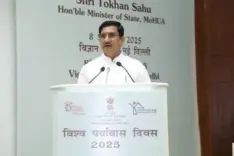Will India's government debt fall to 77% of GDP in 4 years?
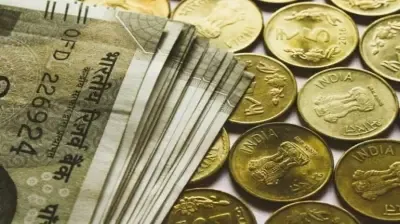
Synopsis
Key Takeaways
- India's government debt is projected to decrease to 77% of GDP by FY31.
- Fiscal consolidation and GDP growth are key factors in this decline.
- High interest payments remain a challenge for the government.
- Inflation trends vary significantly between developed and emerging markets.
- The US Federal Reserve may implement further rate cuts.
New Delhi, Oct 8 (NationPress) As global government debts continue to rise, India’s overall government debt is expected to decrease to 77 percent of GDP by FY31 and further to 71 percent by FY35, down from the current 81 percent, according to a report released on Wednesday.
The analysis from CareEdge Ratings attributed this positive trend to the Centre's fiscal consolidation efforts and a sustained GDP growth rate of around 6.5 percent.
Nonetheless, the report cautioned that the persistent aggregate state debt, particularly in states that are distributing freebies, remains a significant point of concern.
While a moderation in India’s government debt is anticipated, the report highlighted that high interest payments compared to revenue receipts will continue to pose challenges.
The report, titled Global Economy Update, indicated that increasing inflation in developed nations is largely fueled by ongoing core pressures, rising service costs, wage hikes, and an uptick in debt levels.
Moreover, it noted that higher tariffs have played a role in driving inflation in the US.
Conversely, inflation in emerging markets is easing due to prior monetary tightening, a relative weakening of the USD, and falling food prices, providing room for potential interest rate reductions, according to the ratings agency.
The US Federal Reserve reduced its policy rate by 25 basis points in September and has signaled the possibility of two additional cuts this year. CareEdge Ratings warned that a prolonged government shutdown could dampen consumer and investor sentiment, thereby slowing down economic activity.
In Japan, inflation has been decreasing but remains above the central bank’s 2 percent target for over three years. The market anticipates a potential rate hike by the Bank of Japan by year-end, as per the report.
Earlier this month, CareEdge highlighted that numerous advanced economies—including Greece, the US, France, Italy, Spain, the UK, and Canada—have limited fiscal capacity to increase military spending due to already high debt levels. It also cautioned that China's official debt statistics may not fully capture its liabilities, potentially underestimating fiscal constraints.
- –IANS
aar/

